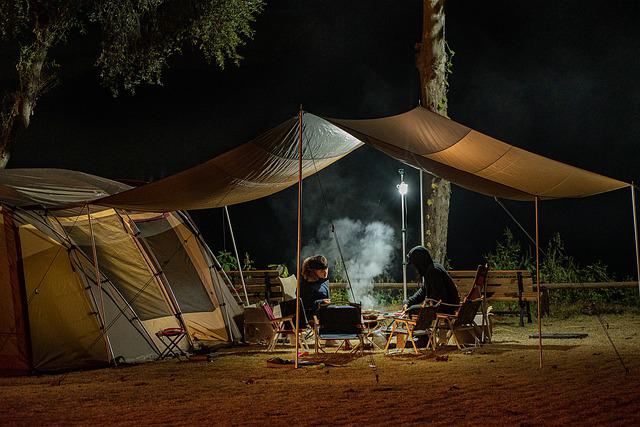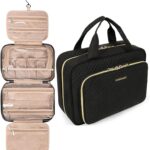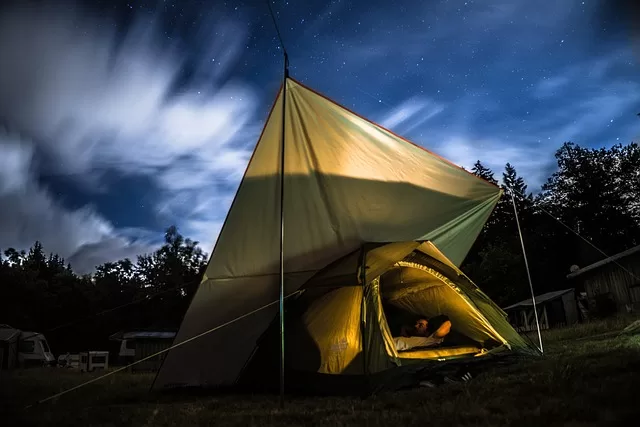What is Stealth camping?
Stealth camping is a camping style that allows you to explore remote areas without being detected by the rest of the world including the authorities. Essentially, this involves using various methods such as setting up camp in designated no-camping areas, using temporary shelters made from natural materials like trees or sheets of metal and altering your behavior so that you are not detectable by wildlife tracking devices.
Camping is sometimes legal and at other times unlawful. For many, it’s a snap to get forgiveness rather than permission because they believe it’s quicker to get forgiveness than permission. We won’t pass judgment on you. We’re simply reporting the facts. While we don’t normally engage in this behavior, Jennifer and I have tentatively attempted stealth camping before.
The trick is to arrive late and depart early in the morning so that you’re not discovered. Plus, you don’t want to leave any evidence that you were there. Stealth camping is a fantastic method to locate empty, remote sites without being seen. If done correctly, you’ll get a nice restful night’s sleep in a quiet, peaceful environment free of traffic noise, animals, and other people. Or simply put it this way: It’s quite near to a location where you wish to be (such as at the beach or an amusement park).
Now that you know what stealth camping is, we’ll go over some stealth camping tips and how to complete your first attempt at it.
Why would you want to do stealth camping?
Now, we understand that some of you may be wondering why stealth camping appeals to you. The response is different for everyone. For example, there are communities of full-time van dwellers who live in larger cities and towns, and their presence isn’t always welcomed, so stealth camping helps them go undetected. Others live full-time in vehicles and want to be more inconspicuous when they’re in cities and the woods so they can have some peace and seclusion. And take it from us: when you live in a vehicle full-time, finding these things might be tough.
How Do You Stealth Camp?
Here are our top 5 tips for stealth camping:
Choose The Right RV for Stealth Camping
The largest RVs (tables, Class C, and Class A RV) are fantastic, but they’re almost impossible to conceal while stealth camping. As a result, a Class B RV or even a B+ is preferable if you don’t want it to appear too “RV-like.”
A small B or B+ RV implies you have a pleasant sleeping space with your own toilet, refrigerator, and cooktop. If passers-by think your little RV is a delivery van, close the windows. Signage and paint jobs should be as drab as possible. To make it easier to fade into the background, the car should be as basic as possible. Some genuine stealth campers remove any decals or even the awning to reduce the appearance of an RV. Cleanliness is also beneficial to keeping your automobile if at all feasible. Because people are wary of things left unattended when they’re dirty, unclean cars attract additional attention.
We’ve camped on busy major roads, in parking lots, shopping malls, 24-hour fitness club entrances, church parking lots, and even city parks. We’ve never had an issue or a negative experience unless you count getting a restless night’s sleep owing to all of the noise in some of the cities where we’ve overnighted.
While Stealth camping, keep it low-key.
Don’t make a lot of noise and draw attention to yourself in any way. Don’t rattle equipment, bark instructions at your travel companion, or play the TV too loudly. You should not, however, try to hide if someone drives by you. Simply smile and carry on as though you belong there if someone passes you by. The idea is to act as though you don’t exist to interfere or cause trouble.
Don’t Get too Comfortable With Yourself
It’s not a good idea to appear like you’re settling down. If you start setting up a BBQ, chairs, and other bigger outdoor items, passers-by will notice. The objective is not to be seen at all. However, if you are noticed, you want people to believe you are simply passing through. You don’t want them to think that squatters have taken up residence in your home.
Rotate Spots When Stealth Camping
If you want to hide in a city for an extended amount of time, it’s best to choose seven to ten sites throughout the city and rotate them. You should never park in the same place twice unless you are forced to do so. If you’re detected at any of these spots, don’t return.
Manage Your RV Power Needs While Stealth Camping
Managing power is a difficult job! There’s no way to charge your battery while stealth camping in any sort of automobile. So, you’ll need to figure out how long your charge will last without connection. After that, consider which features are must-haves. This implies reducing energy wherever possible.
The good news is that stealth camping requires a little electricity for the night. Solar panels are convenient, but they aren’t always necessary. You can run your LED lights, make coffee using hot water from the coach batteries, operate the fridge and even watch TV with just your coach batteries. However, to keep the AC going for extended periods of time, you’ll need more than your house batteries; therefore, if it’s extremely hot outside, you’ll definitely want to open up your windows and turn on a fan… making you somewhat more apparent (and “hearable”) to passers-by.
Check out our travel tips for those traveling for the first time. You should also read our road trip essentials for important things you may miss when traveling with kids.
What are the Safety Rules for Stealth Camping?
- We usually try to look for areas that are yet brightly illuminated, and we always trust our instincts. We remain moving if something does not appear correct. When visiting cities, this is especially important.
- There’s no denying that it’s a good idea to always keep your keys in the same place and park in a location where you can flee quickly if required. So, if necessary, reverse into a parking spot so you can pull straight out. This is known as “tactical parking.”
- If you’ve chosen a location carefully, the risk of someone knocking is minimal, but it does occur. Do not automatically open the door. Look through a window or call through the door to see who it is.
- Cops will always identify themselves. If you’re not sure if they’re a real police officer, ask for their badge number before opening the door and they’ll be able to tell you without hesitation.
- Once you’ve decided to communicate with the other person, it’s time to get in the driver’s seat and talk from there. Our policy is never to open the side door since we don’t want anyone to have easy access to our living quarters.
What are the Benefits of Stealth Camping?

There are several benefits of stealth camping. It’s an exciting experience, but it may not be for everyone. This sort of camping, for example, isn’t for you if you don’t enjoy being alone and want to meet new people. If you want to be alone while still leaving a smaller environmental impact and connecting with nature, it’s ideal for you!
Many people find that stealth camping is especially convenient since it:
- Flexible
- Convenient
- Saves money
- Efficient
- You may go camping in new locations and experience unique adventures if you bring your own tent.
It’s also a fantastic method to locate free locations on city streets that will bring you near places of interest.
is stealth camping illegal?
As laws governing stealth camping vary from state to state. It is generally illegal to camp in places that are off-limits to the public. These areas may include military bases, national parks, and other protected sites. Additionally, camping outside during daylight hours is also forbidden unless you have obtained written permission from the landowner or agency in charge of the area.
In most cases, if you’re caught camping illegally, you will likely be asked to leave and might even face fines or criminal charges. It’s important to be aware of local laws before embarking on your next outdoor adventure so that you don’t get into any trouble! However, in states that permit stealth camping, it is not illegal but you’re required to obtain a permit before embarking on your journey.
What do you need for stealth camping?
To successfully stealth camp, you’ll need to plan your route beforehand and take into account the weather conditions. Make sure to pack appropriate clothes for both warm and cold weather, as well as a tent that is waterproof and breathable. Stealth camping requires minimal noise Levels so make sure not to bring anything that will create noise, such as noisy gadgets or pets and which could also attract wild animals.
Additionally, be aware of your surroundings at all times – never sneak around in blind spots! And lastly, always stay alert while on the perimeter of your campsite; if you see anything out of the ordinary or feel unsafe, quickly move away from the area and report what happened to authorities or loved ones.



























